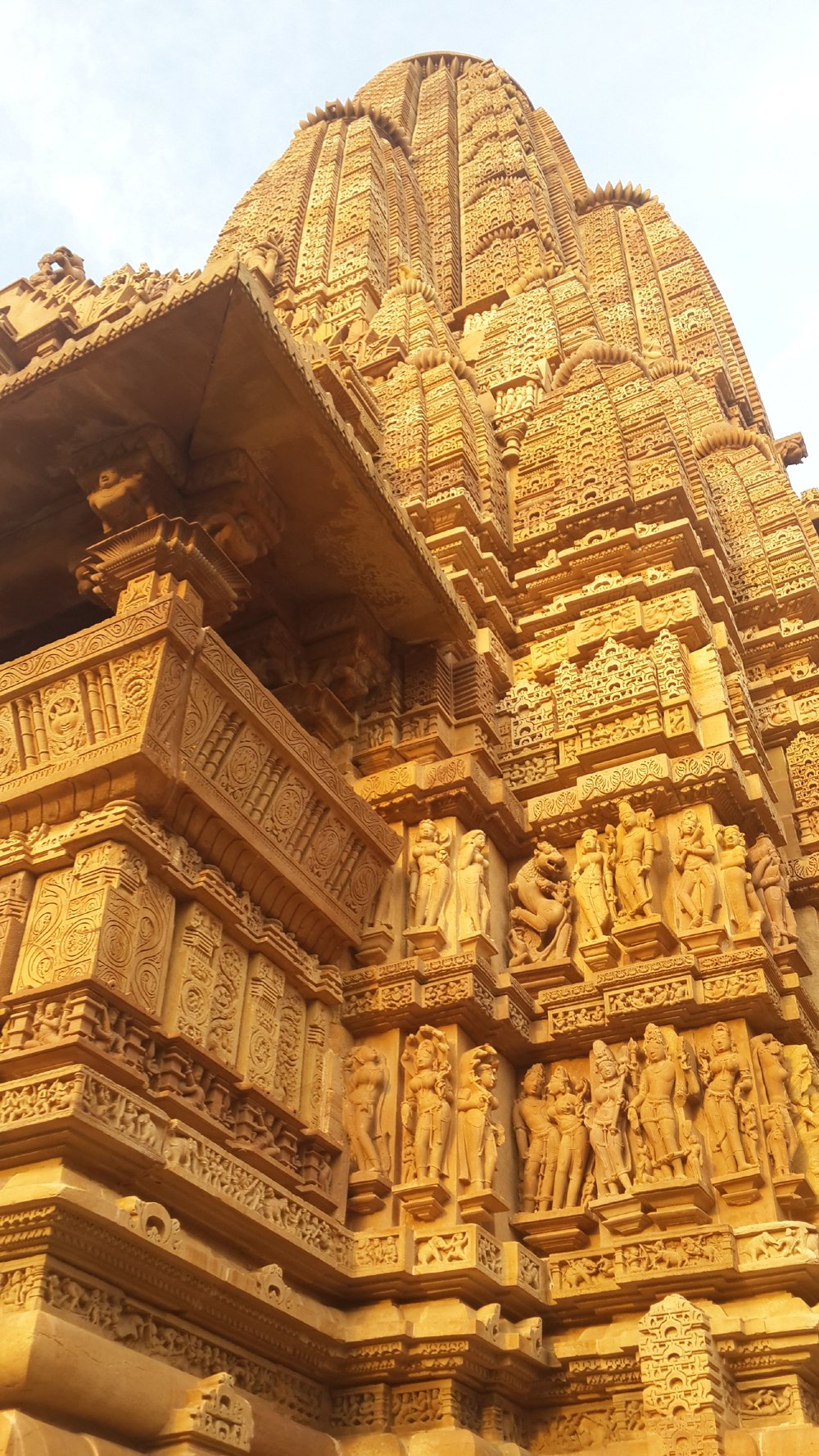Articles features
How Khajuraho temples defined India globally as Kamasutra land (Travelogue) By Bhavana Akella (07:09)

New Delhi, Sep 8 Spread across the dusty old Khajuraho town in Madhya Pradesh, its temples don't just represent architectural finesse and stand as chronicles of time, but also contribute to a large extent to the way India is perceived by the rest of the world - as the land of the Kamasutra, although the book was written much ahead of time.
As one visits these temples, one is overwhelmed by not just the exemplary Indo-Aryan medieval architecture but majorly by the bold sculptors of that time, who challenge even the present day's world with their erotic carvings, meant for "educational" purposes, as the local tour guides term it.
Mahatma Gandhi was also known to have found these images "deeply distressing" and wanted the temples cleansed of these "indecent and embarrassing" representations. Khajuraho, however, has continued to remain as the abode of these erotic carvings, which range from self-pleasuring acts to sexual orgies to bestiality.
Built between the 9th and 11th centuries by the warrior kings of the Chandela dynasty, these temples today are arguably the second most visited in the country - next only to the Taj Mahal.
It is believed that 85 temples were built for multiple gods like Shiva, Vishnu, and other goddesses, out of which around 25 remain in different degrees of preservation across Khajuraho in groups. Their raison d'etre? To settle the differences between the different sects of Hindus, the locals say.
Apart from these temples, the town doesn't have many tourist attractions - apart from the spectacular sunrise at around 5.50 a.m. So what is drawing so many visitors to this rocky plateau, surrounded by emptiness ?
"People are fascinated to see that Indian society was so advanced back then in the 9th century itself, which the sculptors depict through their artworks. It shows the society was open to discuss sexuality and that sex was also one of the ways to reach divinity," Fahim Khan, a tour guide trained by the Madhya Pradesh government told IANS during the author's visit to the town.
Lucas Hellmann, a resident of Cologne, said his interest in the text of Kamasutra drew him all the way to visit the temples.
"I have always wanted to know the origins of the world famous text - Kamasutra. It is interesting to know that these temples represent the text through sculptures so beautifully. And I never thought holy temples could be the place for such representations," Hellmann said.
The erotic carvings of the temples, as one would notice, take to a lot of detailing. There are women who are shown bathing and the water droplets, clearly seen, along with the garments which can be seen as transparent. Another woman who is shown troubled by a thorn in her foot with exasperating facial expressions. Then, there is the sensuality of a celestial nymph putting her make-up on.
Not to be missed are the yogic Kamasutra positions in which the sculptures are shown engaging in plural congresses (orgies), standing coituses and many soldiers engaging in bestiality with their horses. One can also find representation of homosexuality - and women indulging in self-pleasuring activities. All of these are on the spires of the temples, before one enters the holy sanctum.
These temples are some of the very few places in the country that bear significant representation of sexual pleasures.
No wonder, many foreign journalists in their articles have also termed these temples as the reason for the birth of the Kamasutra.
The sculptures also depict the class-divided society, where if a king indulges in a sexual activity with a woman from a lower class, the woman is shown as a miniscule. And nowhere is the woman shown taking charge or initiating the sexual activity - something unlike what the Kamasutra describes.
A must-see is the light and sound show at these temples, which happens in the evenings, voiceed Bollywood icon Amitabh Bacchan, unveiling the history behind the temples.
All in all, the bookshop owners in the town expressed extreme happiness, with copies of Kamasutra selling like hot cakes.
FAQs:
Getting there:
By air - Four Air India flights a week from Delhi via Varanasi
By train - Sampark Kranti Express from Delhi on all days of the week except Wednesdays.
Accommodation: Lodges ranging from Rs.550 ($8) to Rs.1,500 per night (exclusive of taxes)
Three to five-star hotels ranging from Rs.3,500 to Rs.8,000 per night (exclusive of taxes)
Eating out: Many restaurants and cafes in the town serve Mediterranean, European, American and Indian cuisines
Nearby attractions: Raneh Waterfall, which is active only during the monsoon (June-August), about 20 km from Khajuraho.


35 minutes ago
US approval of massive arms sale to Taiwan amid China tensions raises regional volatility

5 hours ago
India has seen transformational economic change in last 11 years, PM Modi tells diaspora in Oman

7 hours ago
Arjun Rampal opens up about his challenging transition from modelling to acting

7 hours ago
Sameera Reddy reveals how long it takes bananas to ripen naturally

7 hours ago
Karan Johar opens up about handling online trolls targeting him and his family

7 hours ago
Urvashi Dholakia shares how Komolika let her explore performance shades actors only dream of

7 hours ago
Harnaaz Sandhu breaks silence after nearly slipping at a recent event

7 hours ago
Randeep Hooda reveals what he really does during jungle safaris

7 hours ago
202 Indians recruited into Russian Army; 26 dead, 50 awaiting discharge: Centre in RS

7 hours ago
Delivery boy dies by suicide after public assault; Tripura Police arrest three from Assam

7 hours ago
'Shaped my journey': Stalin credits wife Durga for his success

7 hours ago
Kerala court orders return of actor Dileep's passport

7 hours ago
'Be alive to ground realities': SC refuses to entertain PIL challenged bottled water standards


























